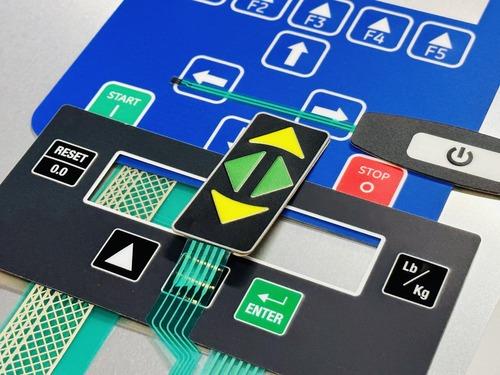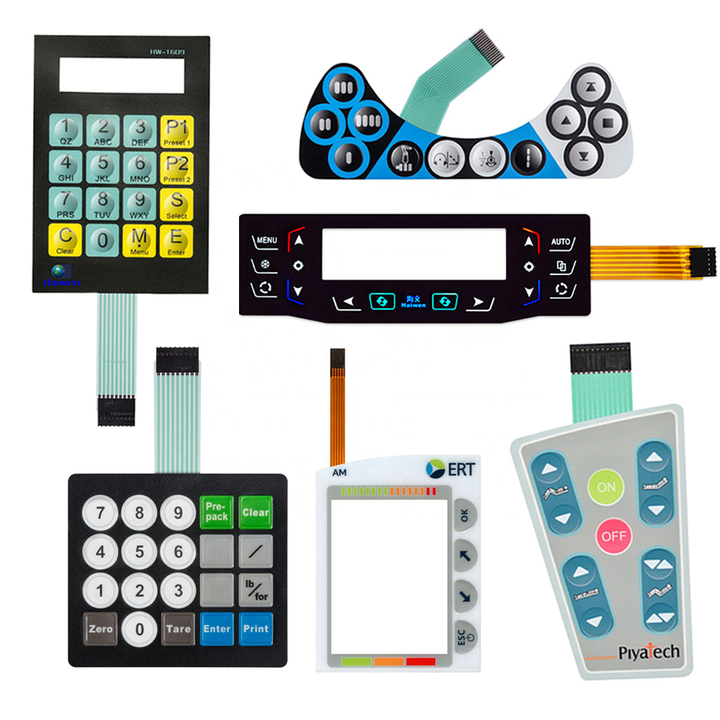Understanding the Value of Membrane Switches in Individual Interfaces
Membrane switches are important elements in the layout of efficient user interfaces, promoting not only capability however also improving aesthetic charm and user communication. Their unique attributes, such as resistance to environmental variables and customizable layouts, make them suitable for a diverse selection of applications across several industries. As we check out the future trends and different benefits associated with Membrane modern technology, it becomes clear that these buttons are greater than just elements; they stand for a convergence of advancement and usefulness. The implications of this innovation on customer experience are worth examining further.
What Are Membrane Switches?

The spacer layer, which includes sticky residential or commercial properties, permits the splitting up of the circuit layer from the overlay, making certain that the switch stays in a non-activated state till pressed. When pressure is related to the overlay, it presses the spacer layer, bridging the space and completing the circuit in the underlying layer. This design not only lowers the physical room needed for standard mechanical switches yet additionally improves the sturdiness of the device, as Membrane switches are usually immune to dirt, moisture, and various other environmental aspects.
Commonly discovered in applications varying from customer electronic devices to medical devices, Membrane buttons are important to modern-day innovation, providing a user-friendly and efficient interface that aligns with modern design demands.
Advantages of Membrane Switches
While many switch technologies exist, Membrane Switches deal unique advantages that make them particularly desirable in various applications. Among the main advantages of Membrane switches is their compact design, which enables space-saving executions in devices where realty is limited. Their thin account not just enhances visual charm but additionally assists in light-weight construction.
An additional significant benefit is their resistance to ecological elements. Membrane buttons are commonly secured against moisture, dirt, and pollutants, making them optimal for usage sought after atmospheres, such as clinical tools and commercial devices. This resilience extends the lifespan of the button, decreasing maintenance costs and boosting integrity.
In addition, Membrane switches can be personalized to meet particular layout needs, integrating unique graphics and shades that enhance customer interaction. Their tactile responses alternatives can additionally be customized to provide a gratifying user experience. Furthermore, Membrane switches are cost-efficient, especially in high-volume applications, as they can be created successfully.
Applications in Various Industries

In the consumer electronics field, Membrane switches are widespread in tools such as microwaves, cleaning equipments, and push-button controls. Their tactile comments and aesthetic choices improve customer experience while offering a smooth, modern-day appearance. In addition, automotive suppliers utilize Membrane buttons in control panel controls and infomercial systems, where room is restricted, and user involvement is essential.
Additionally, the industrial industry leverages Membrane switches in control panels for equipment and devices, enabling intuitive operation in usually rough atmospheres. Their resistance to chemicals and dampness makes sure durability and dependability in these applications. In general, the versatility of Membrane Switches contributes considerably to their widespread usage, making them crucial in numerous technical domain names.
Layout Factors To Consider for Membrane Switches

When making Membrane switches, several essential factors to consider must be taken right into account to make certain optimal capability and user experience. The option of products is crucial; selecting sturdy, high-grade substratums can improve the switch's long life and resistance to ecological variables such as dampness and temperature variations.
Secondly, the layout of the home graphic overlay must prioritize quality and ease of use. Symbols and text need to be readable, and the layout ought to help with instinctive interaction (membrane switches). Additionally, tactile comments is necessary; incorporating a tactile dome or other systems can improve the customer experience by supplying physical verification of activation
One more essential variable is the button's electric efficiency. Designers should ensure that the conductive traces are properly developed to decrease resistance and avoid signal disturbance. This includes assessing the called for actuation force and ensuring compatibility with the electronic parts they will certainly interface with.

Future Fads in Membrane Technology
As modern technology continues to advancement, Membrane buttons are poised to evolve considerably, driven by developments in materials and producing techniques. One arising trend is the consolidation of advanced products, such as flexible substrates and conductive inks, which boost sturdiness and minimize the overall weight of Membrane buttons. These materials not just enhance the responsive action yet additionally permit for the style of switches that can hold up against harsher ecological problems.
Furthermore, the assimilation of touch-sensitive modern technologies is transforming standard Membrane Switches into even more interactive interface. Capacitive touch sensing units installed within Membrane button panels can supply a more responsive and user-friendly individual experience, lining up with the growing need for smooth, contemporary designs in consumer electronics.
In addition, advancements in printing methods, such as electronic and 3D printing, make it possible for fast prototyping and personalization of Membrane buttons. This flexibility allows manufacturers to respond a lot more rapidly to market needs and consumer preferences.
Last but not least, sustainability is coming to be a considerable focus, with producers discovering environmentally friendly products and procedures. As these patterns unfold, the future of Membrane technology assures boosted functionality, aesthetic appeal, and environmental responsibility, solidifying their function in advanced user interfaces across different markets.
Final Thought
In final thought, Membrane Switches represent a crucial component in the layout of customer interfaces, integrating functionality with aesthetic versatility. As improvements in technology continue, the advancement of Membrane switches is Full Report anticipated to more fine-tune customer interfaces, driving development and improving functionality in an increasingly intricate technological landscape.
Membrane buttons are important parts in the style of effective customer interfaces, facilitating not only performance but also boosting visual appeal and individual communication.Membrane Switches serve as an essential part in different individual interfaces, facilitating a smooth communication between customers and digital tools.While various switch technologies exist, Membrane Switches deal distinct advantages that make them particularly desirable in numerous applications.Furthermore, Membrane switches can be personalized to satisfy details layout demands, integrating special graphics and shades that boost customer interaction.In verdict, Membrane Switches stand for an important part in the style of user interfaces, incorporating capability with aesthetic adaptability.